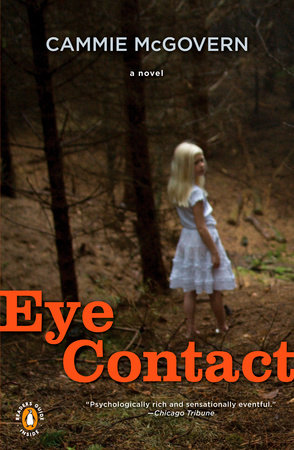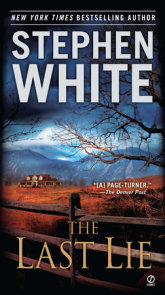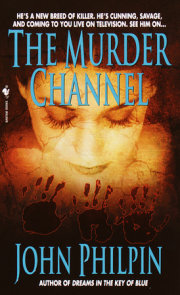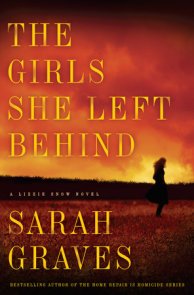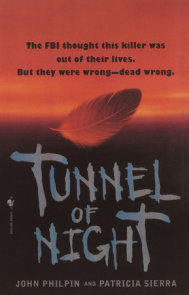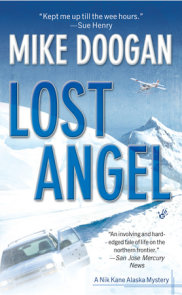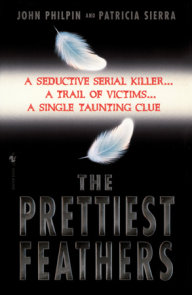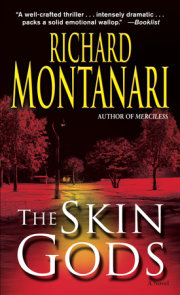READERS GUIDE
Questions and Topics for Discussion
INTRODUCTION
When Cara is called in to her nine-year-old son Adam’s school one afternoon, she tries not to expect the worst. Because Adam is autistic, Cara—a single mother—has spent many hours with his teachers, principals, and guidance counselors discussing her son’s development, and it isn’t unusual for Adam to throw a tantrum at school that would necessitate her presence.
But today is different. Adam is missing, and he hasn’t been found in any of his usual hiding places. He broke a rule (which he never does) and disappeared during recess, presumably having left school grounds. When the police find him later that afternoon, Cara is stunned to find out that Adam—who has no friends at school to speak of—was in the woods behind the school with a fellow student. Her name was Amelia Best, and she was found dead, stabbed in the chest.
The community is thrown into crisis, with parents fearing for their children’s safety and teachers at the local schools doing their best to help their young students cope with this tragedy. Cara is convinced that Adam can help the police solve this murder, but he has retreated back inside himself after the incident, despite recent signs of improvement. Though Detective Matt Lincoln is skeptical about Adam’s ability to aid the investigation—child witnesses are difficult enough, but what can he do with one who won’t even speak?—Cara refuses to give up on her son, who has become her entire life since the death of her parents in a car accident. She tries in vain to get him to participate in his usual communication games and finds it difficult just to get him to look at her. Willing to take a risk in order to bring Adam around, she agrees with a local schoolteacher that an older boy’s companionship might help and invites Morgan over to visit.
Morgan, an eighth grader at the local middle school, has some troubles of his own: while he isn’t autistic or developmentally disabled, he attends classes with a special group at his own school, which he refers to as “the group for kids who have no friends.” He faces constant tormenting from bullies at recess, and though he likes the teacher of his special group, Morgan doesn’t share a bond with any of his classmates. It is clear from the start that he is harboring a terrible secret of his own. When Morgan meets Adam, Cara is shocked when Adam speaks his first voluntary phrases since the murder. As the two boys begin spending more time together, Adam offers his own clues to Cara that are difficult to decipher but might be important to locating the killer. But Morgan’s secret, as well as some old friends from Cara’s past, threatens to obscure the path to the truth behind Amelia’s death.
As Cara and Detective Lincoln draw closer to the resolution of this awful crime, Cara is forced to come to terms with the consequences of decisions she has made—including the choice she made as a young woman not to include Adam’s father in his life—and realizes she is not alone in her pain and isolation. In order to get to the murderer and bring Adam back to her, Cara must find it in her heart to forgive and be forgiven. Cammie McGovern’s Eye Contact is a heartrending portrait of a mother’s relationship with her son and a psychological thriller that keeps the reader guessing up to its final pages.
ABOUT CAMMIE MCGOVERN
Cammie McGovern was a Stegner Fellow at Stanford and received the Nelson Algren Award in short fiction. Her work has been published in Redbook, Seventeen, Glimmer Train, TriQuarterly, and other publications. This is her second novel.
A CONVERSATION WITH CAMMIE MCGOVERN
Like Cara, you are also the mother of an autistic child. To what extent did your own experiences inform your writing? What, if any, misgivings and difficulties did you encounter in approaching such a personal subject through fiction?
About four years ago, I started writing a nonfiction account of our experience in the early years just before and after our son’s diagnosis of autism. It’s a time when you feel frantic to be doing as much as possible because everyone tells you the early years are the most important, but no one can say with any certainty what that help should look like or which therapies will work best for you child. I used to devour every account I could find of parents in a similar situation, looking for clues, for children who resembled my son and for what strategies worked best. Eventually, as we emerged from that time, I thought it might be a service to other parents to write about our own story and the discoveries we’d made, often by trial and error and muddling through a lot of mistakes. The more I wrote, though, the more I realized how hard it is to write a memoir well and sustain a narrative that doesn’t have a clear ending in place. I’d already published one novel and many short stories. I’d spent the last fifteen years as a fiction writer, and I knew how to create a story and keep it moving along with suspense and surprises better than I knew how to report the countless ways that those years were hard and lonely for our family. Now, I’m glad I put aside the nonfiction version. I think there are quite a few wonderful memoirs of parents who’ve tackled this struggle in interesting ways (two favorites are Beth Kephardt’s The Slant of Sun and Pat Stacey’s The Boy Who Loved Windows). By returning to my comfort zone of fiction, I suppose I’m hoping to accomplish something with a different audience: that people looking for a good mystery might read this and also learn a bit about autistic spectrum disorders. As the numbers of children being diagnosed with autism continue to rise, it seems important to tell as many stories as possible that show what I’ve seen and know—what’s hard for these kids and also how brave they can be, facing down their fears, overcoming extraordinary obstacles and reaching out to other people.
One gets the impression by the end of the book that this has really been Cara’s story, but Eye Contact is told from the point of view of multiple characters, including Adam, Morgan, and June. What made you decide to write Eye Contactfrom a number of different perspectives? Did you ever consider writing it from Cara’s perspective only?
I initially wrote most of the story from Cara’s point of view, when I first envisioned the book as a story centered around a terrifying scenario that most parents of autistic kids would relate to: What if, after years of laborious therapy with some success gaining language, play skills, etc., your child witnessed some traumatic event and lost everything in a single day? My first draft was much less about who did the crime and more about the history of Adam’s therapy, where he’d been and how far he’d come. My husband read that draft and thought it seemed too much like a memoir with a story laid over it. He encouraged me to let the story take over and not be afraid to make it a murder mystery, with different people acting as detectives, pooling their knowledge. At the same time, I had begun sitting in on a few different social skills groups with middle-school-aged boys, and I so fell in love with some of them and the way they talked about their struggles that I wanted to introduce a character who would act as a kind of apprentice detective with Cara but who would ultimately also help her understand Adam a little bit better.
Eye Contact is an insightful look at the relationship between a mother and her son, and a portrait of a community, but it is also a riveting murder mystery. What aspect of the book came to you first? Did you set out to write a mystery or a literary novel? How did you strike a balance between the two?
I’ve always liked writing plot-driven stories, but was a little intimidated about saying I wanted to write a murder mystery. My background is an MFA at the University of Michigan and a Stegner Fellowship at Stanford and not too many people there are teaching or celebrating the joys of genre fiction. Not that anyone was putting it down; it just wasn’t what we were reading or talking about or there to do. Now I feel like we’re seeing more and more “literary” writers using a crime or a murder at the center of their stories simply because it puts every character on a precipice, raises the stakes and launches a story that can still do all the same things a “literary” novel does, but can also be a page-turner as well.
It isn’t clear who Amelia’s murderer is until very late in the novel. Did you know who the killer was before you started writing? How did you decide who it would be and why did you choose that person?
I didn’t know how the book would end for a long time and even changed the ending (and the killer) a few times after the book had sold. It’s a tricky business because the ending has to both surprise the reader and have a feeling of inevitability to it. I switched it around so many times I think I lost track of what effect I was trying to achieve. I finally settled on one and at the last minute before it went to the printer in the UK (where the book was being released first), and my brother, who’s a big mystery fan, read it and said he liked the first version better for the three reasons he proceeded to list like the true mathematician that he is. I remember my heart sinking when I read his e-mail because I instantly knew he was right and I had something like twenty-four hours to change everything back.
There are a number of troubling incidents in the book that feature the cruel and heartless ways that children sometimes treat one another, but there are also instances where children feel strongly compelled to help one another and are kinder than their adult counterparts. What have you experienced, as a mother, that led you to write about these issues inEye Contact?
When you’re the parent of a child with autism, you are so prepared for cruelty and on guard about bullying that in fact what’s surprised me much more is how many examples I’ve seen of surprising kindness and generosity on the part of kids my son goes to school with. I do think it’s something that begins when kids are very young and blossoms with the children of parents who make the extra effort to teach their children about kindness and generosity toward all children, even those who are different or challenged, the sort who invite everyone in that class to a birthday party or have an odd kid over for a playdate. With these parents, children tend to learn an invaluable lesson about the rewards and pleasures of helping other kids, of not being frightened of differences and even about how to reach across them.
The accepted statistic for the current prevalence of autism is 1 in 166 children might be affected by some form of the disorder. At the moment, there is no cure. What do you think should be done on a larger scale in the United States to address the issue of autism? Are you actively involved in research on autism? Did writing this book change your perspective on the disorder in any way?
Though no one can say with any certainty what has caused the exponential increase of autism in the last twenty years, most doctors and professionals agree that it has to be partly owing to an increase in a whole variety of environmental toxins on genetically vulnerable, very young immune and nervous systems. I don’t see how thimerosal being 50 percent mercury and used as a preservative in virtually all the vaccines during the years of the autism spike isn’t at least one factor in the increase, but I also think there are probably many factors. I believe that 100 percent thimerosal-free vaccines are imperative now (a stand the CDC seemed to agree with when it recommended removing and reducing all mercury exposure), though currently only four states have mandated this and the federal government is mysteriously recommending the flu vaccine (the only vaccine that still contains thimerosal) to all pregnant women and children under three years old, exactly the group that should not be getting such large doses of mercury.
What writers have influenced you, both on this book and others? Outside of questions of influence, who are some of your favorite authors?
In the last few years, I have been reading a wide range of mystery writers, especially ones who invert the formula a little, like Ruth Rendall (and her Barbara Vine books), Minette Walters, Dennis Lehane, Denise Mina, Laura Lippman, Harlan Coben. I love all Jess Walters’s books, but especially his second, Land of the Blind, and John Searle’s Strange but True. I seem to be most drawn to books that put ordinary characters in the role of detective, where the clues to the mystery lie, at least in part, in their own past and in confronting certain demons they have let lie too long.
It seems like Cara’s life is even more difficult than those of other parents of disabled children, because she is unmarried and both her parents are dead. Although she seems to get along well with Adam’s teachers and with the police who are investigating the murder, it is pretty clear she has no emotional support structure around her. Why did you decide to make her so isolated? How important do you think it is for a parent in her situation to have another adult to depend on—whether it is a spouse, a family member, or a close friend?
I originally had Cara being a divorced mother but the further I got into the story, the more I wanted to raise the stakes for her by isolating her as much as possible. It does seem a bit cruel to put your main character in the center of a murder investigation and then not give her any parents, siblings, old friends or neighbors who are particularly helpful or supportive of her. But here’s the thing—even when you’re happily married, as I am, with a wonderful and supportive extended family on both sides as we have, those early years parenting a child with autism can feel this isolated, or at least they did for me. It’s not an experience you can share easily with your family or old friends because no one else is going through it. What Cara doesn’t have that I found early on is a support group of other parents of children with special needs facing similar issues. For me, this made an enormous difference and was the beginning of putting my own child’s challenges into perspective and discovering that yes, there really are blessings to be found along the way in this journey.
There are repeated mentions of how beautiful Amelia was for a girl her age, and when this terrible thing occurs to her, the question of sexual assault is immediately raised. However, it is not portrayed in a sensationalistic way—the young girl’s sexuality is only pondered at length by sympathetic characters like June and Cara. Did you make any conscious decisions about how to deal with such a sensitive topic in this book? Was the lack of graphic violence and descriptions intentional?
These were the hardest scenes for me to write perhaps for obvious reasons: It’s unsettling to contemplate violence and cruelty, especially being committed against children. For a long time, I put off writing them and put off determining exactly what had happened in the woods because I didn’t want to think about those specifics. Finally, though, to have a book where you create a real sense of menace, you need to have a genuinely dark source for that. I tried to create a villain whose evil might be scarier because it reflects something familiar and recognizable in our society.
Do you think you will write more mysteries or “literary suspense” books in the future? What are you working on now?
One of the things I loved most about writing Eye Contact was creating a central character who, because of his disability, is as much of a mystery as the perpetrator of the crime is. Currently in America, 20 percent of our population identifies itself as disabled, an enormous group of people that has been underrepresented in books, movies and TV. The fact that we see so few people with disabilities in the media adds to the mystery surrounding them, I’m sure, but sometimes the disability itself creates barriers—language is difficult, communication is broken down, physical logistics are hard. My next book, also a mystery, has a woman with cerebral palsy as a main character. She is the unlikely center of a love triangle and the victim of a crime committed in its wake. As everyone tries to figure out exactly what happened, they all begin to realize how little they actually knew about her.
DISCUSSION QUESTIONS









